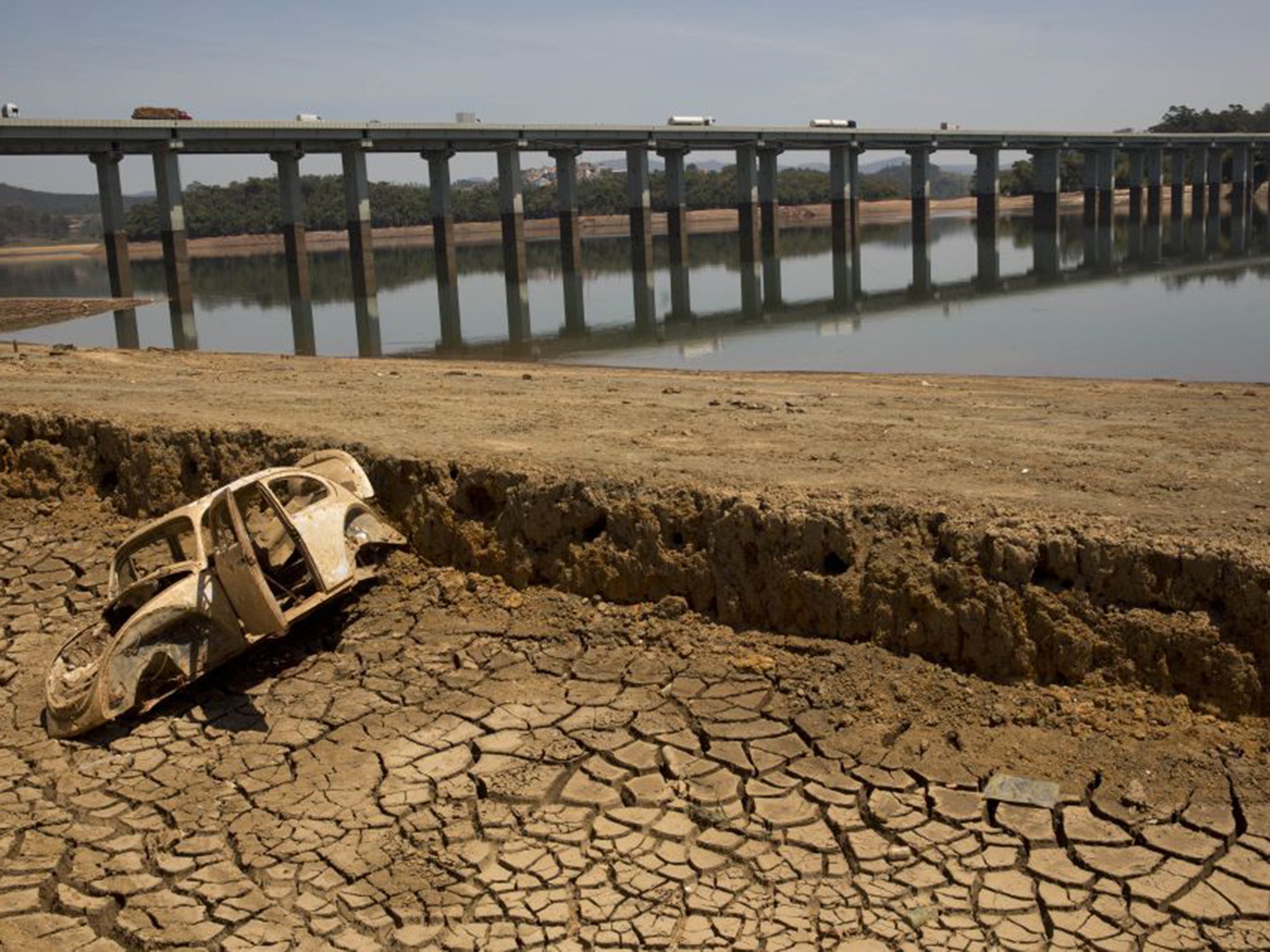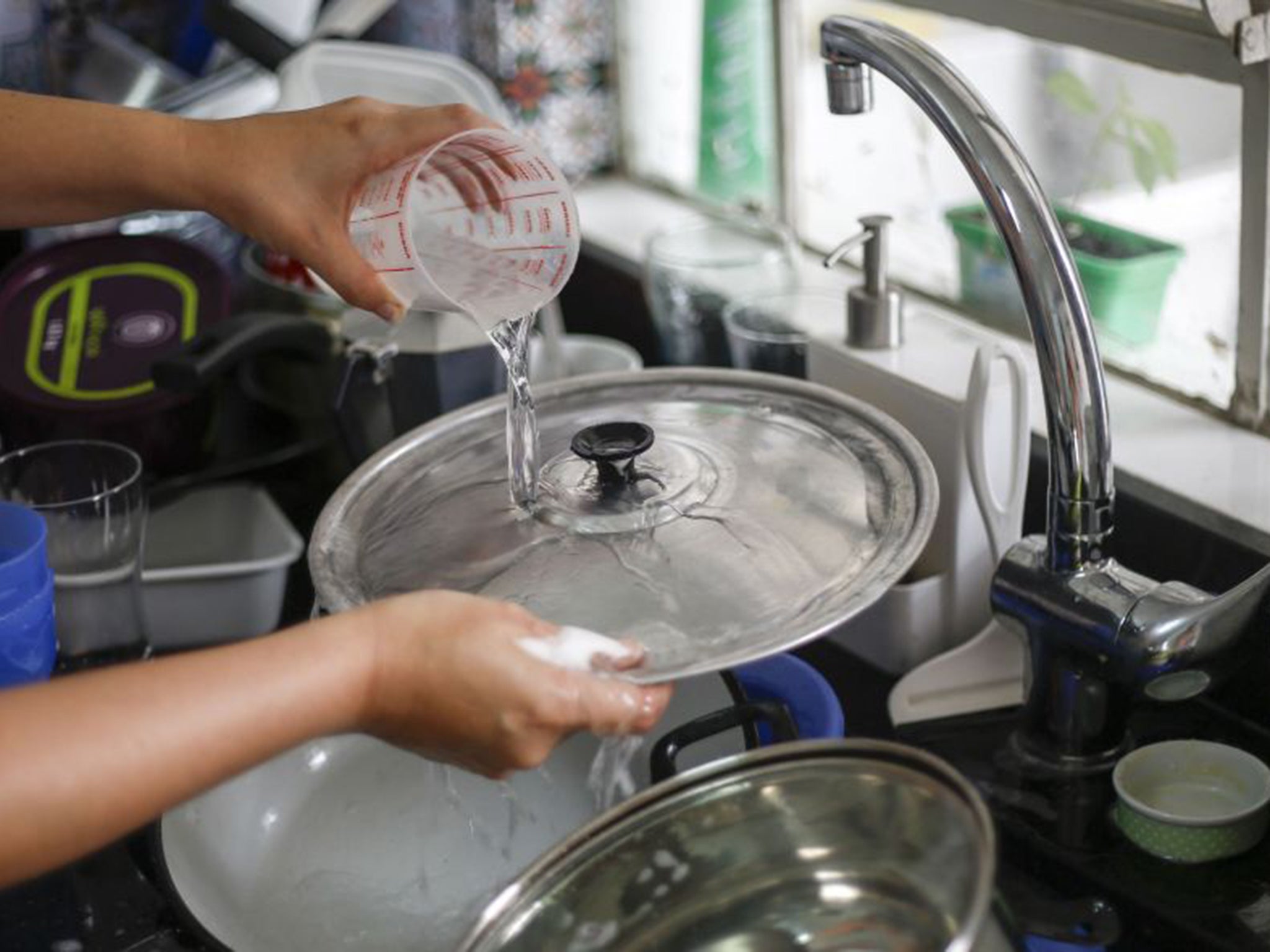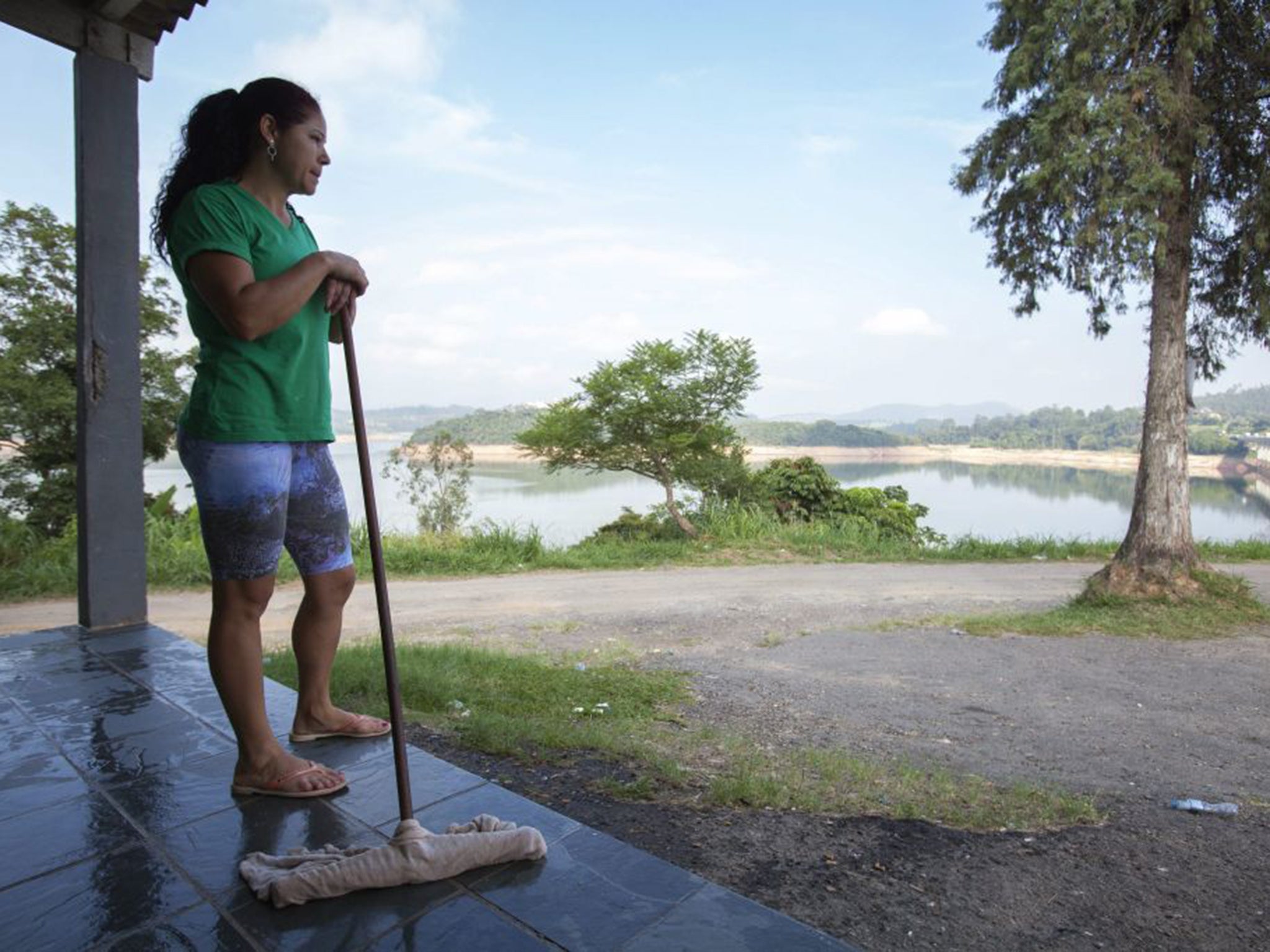Brazil drought: It's a really dry January in the South American country, with rainfall is at its lowest level since 1930
Minister claims: 'God is Brazilian. He will make it rain' as rationing and power cuts hit south-eastern states

Your support helps us to tell the story
From reproductive rights to climate change to Big Tech, The Independent is on the ground when the story is developing. Whether it's investigating the financials of Elon Musk's pro-Trump PAC or producing our latest documentary, 'The A Word', which shines a light on the American women fighting for reproductive rights, we know how important it is to parse out the facts from the messaging.
At such a critical moment in US history, we need reporters on the ground. Your donation allows us to keep sending journalists to speak to both sides of the story.
The Independent is trusted by Americans across the entire political spectrum. And unlike many other quality news outlets, we choose not to lock Americans out of our reporting and analysis with paywalls. We believe quality journalism should be available to everyone, paid for by those who can afford it.
Your support makes all the difference.As water reserves in Brazil’s most populous city, São Paulo, ran perilously low last year, there were jokes about needing a rain dance.
This year is different. Last week, the country’s politicians called upon divine intervention to end a historic shortage. “God is Brazilian,” said Eduardo Braga, mines and energy minister. “He will make it rain.” Even those within São Paulo’s water company Sabesp are hoping for a miracle to prevent the reservoirs from drying up completely within five months, after the lowest rainfall since 1930.
Yesterday, it was reported that levels in the Cantareira water system, which supplies millions of people, had dropped to 5.2 per cent of capacity – having fallen every day since 11 January.
“Last year, we were operating below the record low. Now we are operating below last year,” said Izabella Teixeira, the Environment minister, on Friday, as ministers from six departments met to discuss the crisis. “In 84 years of monitoring, we have never seen in south-eastern Brazil such a sensitive and worrying situation.”
President Dilma Rousseff has approved government funding to speed up work to divert water from the Paraiba do Sul basin to the Cantareira system as an emergency measure. In addition, there are plans for a campaign to raise awareness about the importance of saving water.
As well as São Paulo, two other states in the south-east region – Rio de Janeiro and Minas Gerais – have been asked to save water as the drought continues.

Rio residents have experienced taps running dry for more than a month. “Not a drop has fallen since December,” Marilene Silva, 53, told O Dia newspaper from her home in Cosme Velho, in Rio’s affluent south zone. “I work a lot and when I come home, I have to fill up a bucket. I buy disposable everything so I don’t have to wash it.”
The state environment secretary, Andre Correa, acknowledged that the state of Rio de Janeiro was experiencing “the worst water crisis in its history”. He said that the situation in São Paulo was “infinitely worse” but ruled out rationing for at least six months. Meanwhile, the president of Rio de Janeiro’s water company Cedae admitted for the first time that the state might face water rationing by the end of the year. The warning came as the Paraibuna, the biggest reservoir supplying Rio, ran dry for the first time since 1978.
“There may exist the possibility, if there is no improvement, of greater control measures for the lack of water at the end of the year,” Jorge Braird told a newspaper.
São Paulo has been experiencing shortages since a record drought last year forced water companies to resort to the “death volume” of reserve water at the very bottom of the reservoirs. Rationing has been taking place, with water reportedly being cut off at 3.30pm until 8am daily in Vila Madalena, São Paulo.
Low water levels at hydroelectric dams have also put the country at risk of more frequent power cuts. Last Monday, at least 11 states and the federal district were affected by a blackout as a result of restrictions placed on the transfer of energy from the north and north-east to the south-east and peak demand.

Experts have said that there may be more power cuts in the coming months, including “preventative blackouts”. While the number of power cuts fell last year compared with 2013, they increased in the south-east and centre-west as the water crisis worsened.
Rain is forecast for the next 10 days, and the government is monitoring the situation with weekly meetings. Around the Cantareira system, 25.9mm of rain fell on Friday and into yesterday – but there has only been 90.8mm of rain all month, compared to the average for January of 271.1mm. Recent rain has flooded regions of Greater São Paulo. The government has promised federal funding for states taking emergency measures to secure water supplies.
“We are supporting funding,” Mrs Teixeira said. “There may be emergency measures, for example, like the change in abstraction points in rivers to ensure the supply in municipalities that capture directly, and this often requires short-term funding. We have the promise of rain this week so we’re going to keep assessing, and we have the months of February, March, April, which are months that are the wet season.
“We’re going to watch this and understand what is going to happen in the coming months,” she said.
Join our commenting forum
Join thought-provoking conversations, follow other Independent readers and see their replies
0Comments